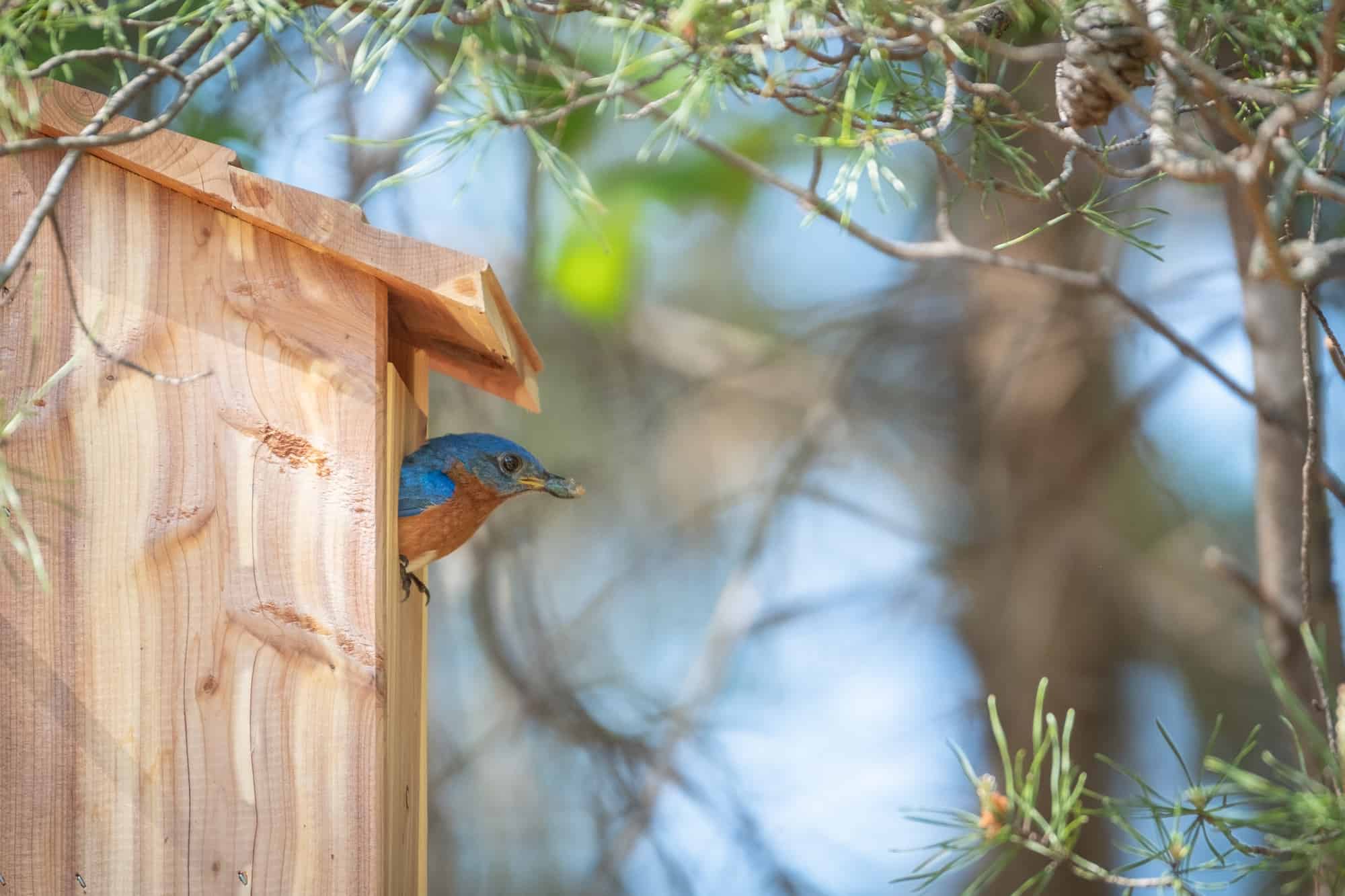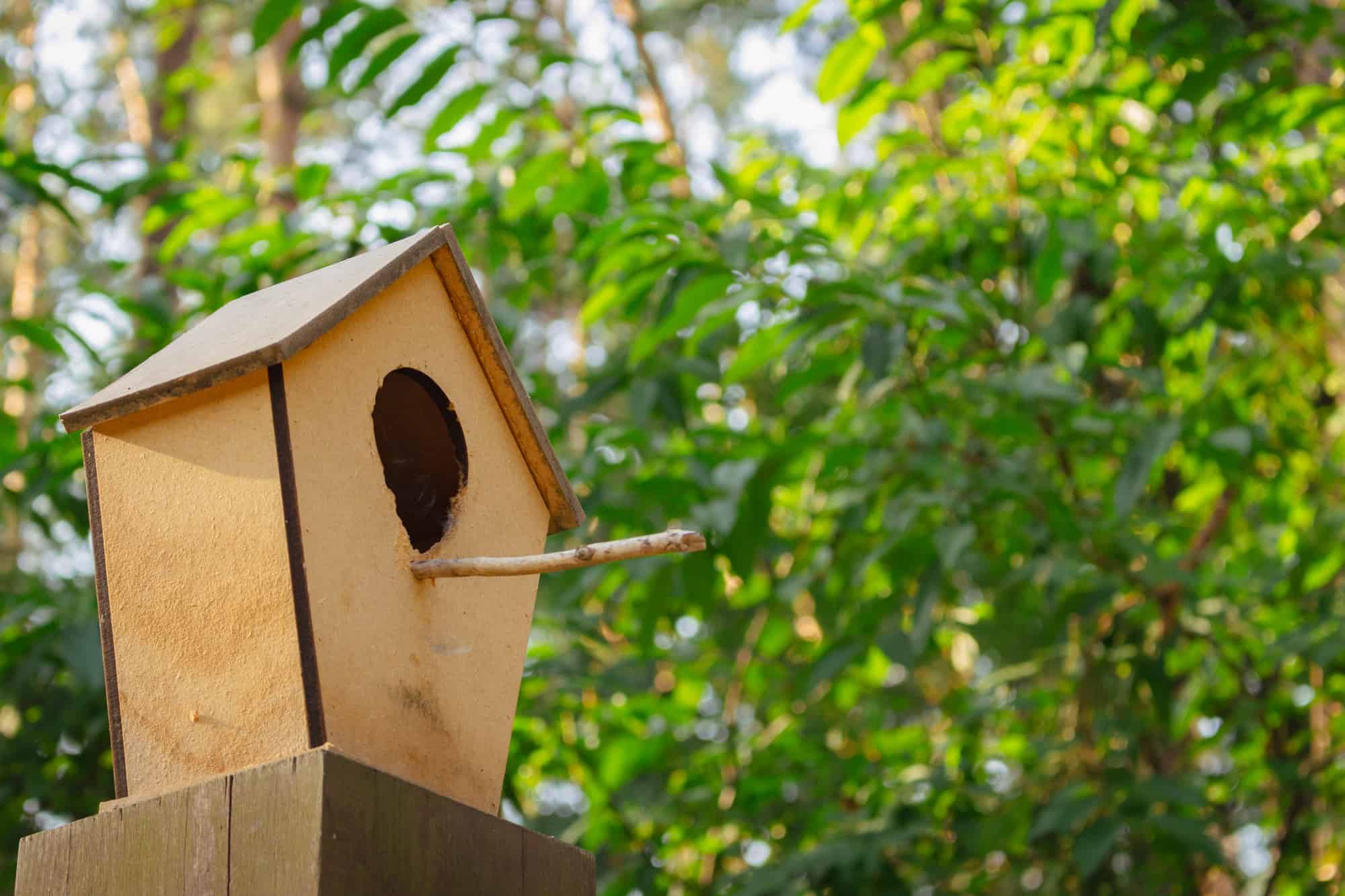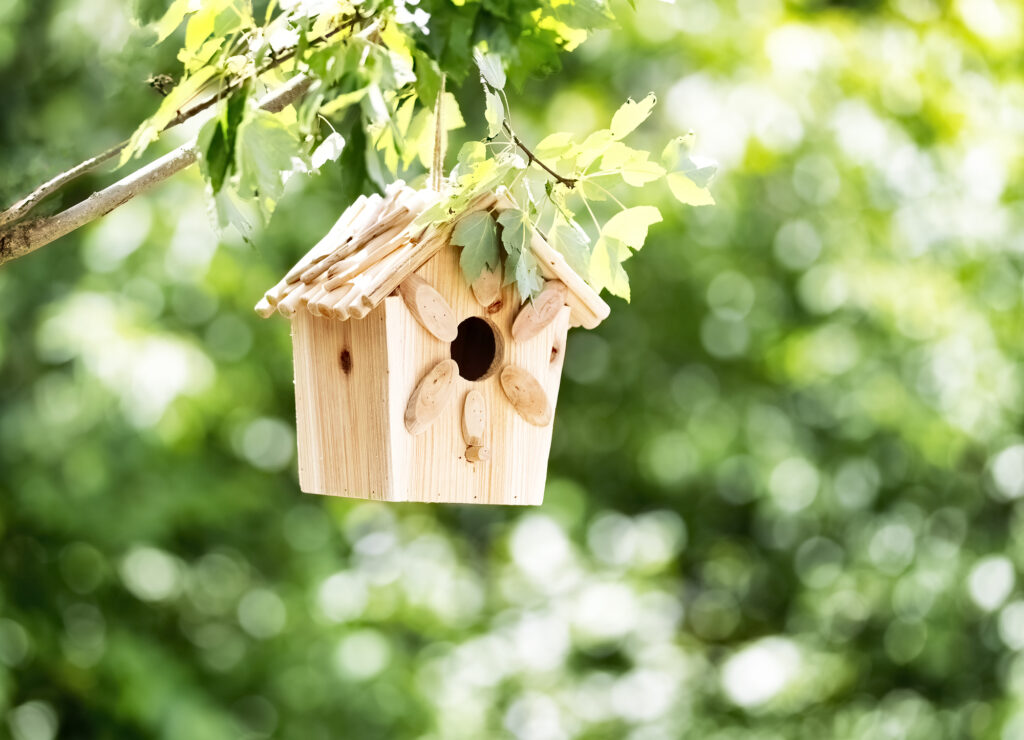Getting birds nesting in your birdhouses can be a tricky business!
First, you need to buy or build the right box with the ideal dimensions and design to attract the right types of birds, then you have to place it in the perfect place for them to feel safe and move in.
If any of these details aren’t spot on, the birds may reject your birdhouse altogether, leaving you wondering what went wrong.
Drawing on years of birdhouse experience, here are some suggestions that might encourage birds to call your bird box their beloved home after all.
First and Foremost – Don’t Make Any Changes During the Spring!
Before we get into the many reasons that birds may be turning their beaks up at your birdhouse, it’s important to remember patience.
Birds take their time to choose their nest sites, and different species begin nesting at quite different times over the spring. Even if the first potential residents decide not to move in, for other species arriving later, your nest box might still provide the ideal home!
Messing around with your birdhouse design or placement during the spring is a sure way to deter local birds from nesting. Many a time, birds will be scouting out possible homes and keeping a close eye on them before moving in. If they see you tampering with their would-be birdhouse at this time, they’ll almost be scared off and not return.

Wait Until the Nesting Season Is Over Before Making Any Improvements
For any of the following suggestions, please don’t make any of the changes in the spring or early summer! By doing so, you could be jeopardizing both your local birds’ nesting plans and also your own enjoyment of watching them.
Instead, wait until the nesting season is finished before attempting any amendments.
Correct the Height

My first suggestion for getting birds into your birdhouse is to get the height right. Did you know every species of bird has its preferred nesting height range? If the house is placed outside of this, the birds are much less likely to use it.
According to the excellent index of birdhouse types and placements on nestwatch.org, most songbirds prefer their birdhouses placed between 5-15 feet high – but there are nuances!
Birds with a taste for the high life such as several owl species and purple martins need their nest boxes to be placed at least 10 feet off the ground to feel at home, whereas bluebirds and some wrens prefer to build their nests at only 4-6ft high.
By knowing which birds you want to attract, you can place your birdhouse at the optimum height to be compatible with the maximum number of possible species.
Correct the Direction
Another issue that many people don’t count on when installing a nest box is the direction it faces. Imagine that you’re a bird building your nest in a cavity – would you choose a hole that faces most of the incoming wind and rain, or away from it? Also, think about how much sun you would want to receive.
According to nestwatch.org, most birds prefer their birdhouses facing east, away from prevailing westerly winds.
Once again, there are differences between species, so I’d highly recommend checking their index to find out the ideal direction for the particular birds that you’re trying to attract.
Move Your Birdhouse to the Ideal Habitat

The next level in choosing the perfect place for your birdhouse is understanding the perfect habitat. Because each bird species has their preferred nesting habitat, however, you’ll need to do your homework to find out what your local birds like the most!
Bluebirds, for example, prefer their nest box placed in a fairly open setting where they can forage around open grass but also have some high perches to rest on. For the best chance of attracting purple martins, a pond or lake nearby is a huge boon.
If your birdhouse is going unused in its current setting, do the research to discover the perfect placement for your desired birds, and consider moving it to a better spot.
Give Your Birds More Privacy!

While everyone wants to have a great view of their favorite birds building their nests and raising their young, you need to think about the birds’ preferences, too!
Although some birds like house wrens will have no problem building their nest on your front porch, many others require a little more privacy to feel safe enough to breed.
For most species, there is a happy middle ground between making your nest box viewable and giving your birds enough seclusion for them to feel unthreatened by onlookers or predators.
If your birdhouse remains unused after an entire season, consider placing it somewhere where the birds can feel more hidden away. Even if you get to see them a little less, at least you’ll have a family of birds to look at!
Keep Your Birdhouse Away From Cats

At wildbirdscoop.com, we’ve written plenty of articles about what a menace domestic cats can be to wild birds. Especially at nesting time, cats are responsible for the deaths of millions of young birds every year.
I often gift birdhouses to my friends but notice the people who have cats in their yard are less likely to see them getting used. Wild birds know how dangerous cats are, so they’ll do everything they can to avoid building their nests within easy reach of a feline!
One solution that is often suggested is to keep your cats inside during nesting time. While this is the most effective measure for preventing predation, I can understand people who’d prefer not to keep their cat grounded for weeks on end during their favorite months of the year, too.
A second option is to simply place your birdhouses a little bit higher up, in a more secluded place where your cats are less likely to climb. You could even install a barrier to prevent your cat from climbing a particular tree or post.
If you’re concerned about the number of bird lives your cat is claiming, you could also consider using a brightly colored bird protection collar. While they’re not 100% effective, they might well save many lives of your feathered friends.
- Fashion Meets Function: Birdsbesafe cat collars are not just a visual treat for you and your feline friend, but also a bird-saving...
- Bird Guardian: Keep the birds chirping merrily in your backyard. Our birdsbesafe cat collar cover works as a bird guardian,...
- Planet-Friendly: Love your cat, love the birds, love the earth! Our birdsafe collar is part of a mindful approach to pet...
Last update on 2024-04-29 / Affiliate links / Images from Amazon Product Advertising API
Correct the Hole Size

Birds can be extremely fussy about the type of birdhouse they prefer. If the details such as the hole size are not just right, they might ignore the birdhouse altogether.
The hole size obviously needs to be big enough for the birds to get inside! While northern flickers require a hole that’s 2.5 inches in diameter, brown-headed nuthatches need only a 1-inch cavity to squeeze through.
What’s important is that the hole size isn’t too much larger than the ideal minimum for the species. If it is much bigger, it’ll open up the birds to competition from larger species and may even put them in danger of predators, too.
Check the index on nestwatch.org to find out if the hole size is right for your local species. If it isn’t, either purchase a new birdhouse or replace the front panel with a hole that’s the ideal size.
Improve Your Birdhouse Design

Following on from correcting the hole size, other aspects of birdhouse design are essential if you want your feathered friends to use the boxes successfully.
Birds may reject birdhouses where the entrance hole is at the wrong height or those that have a poor roof that lets in water. Similarly, the wrong birdhouse size or shape can also repel would-be residents. If you’re building your own birdhouse, paying close attention to these design details is crucial for attracting potential nesters.
If you’re buying birdhouses online, I’d highly encourage you to check reviews thoroughly to make sure the design has had top success rates with others who’ve tried it.
You can find out more about birdhouse design for various species from the thoroughly researched guides at nestwatch.org, here.
Place Birdhouses at the Right Distance From One Another

If you have more than one birdhouse and not all of them are being used, it may be because they’re placed too close to each other.
While birds are often tolerant of neighbors of other species, members of the same kind frequently compete for nesting territory, and won’t tolerate others of their species nearby.
Since each species has its own requirements for birdhouse spacing, check the index at nestwatch.org to find out how much distance from each other your local bird species needs.
Just bear in mind that in some cases, placing different types of birdhouses suitable for different species in the same area is a good way to use space efficiently! Although bluebirds don’t like other bluebirds nesting within 300 feet of them, they’ll happily nest alongside tree swallows, even on the same pole!
Clean Up Your Birdhouse’s Interior

Last but not least, if birds have used your nest box in the past but are rejecting it this year, it may be a sign that you need to give the box a good clean-out to encourage new guests!
According to leading experts at nestwatch.org, some species of birds such as wrens don’t seem to mind whether a birdhouse retains nesting material from previous years or not, but others, like bluebirds, show a definite preference for empty boxes that have been cleaned out.
The reasons for this may include that boxes with nests from previous years are more likely to harbor parasites and insanitary conditions than those that are empty.
If birds sense that the potential home isn’t in the best condition or not made of the materials they prefer, they may try to clean it from old nesting material themselves or otherwise may reject it outright.
Likewise, it’s not recommended to add any nesting materials yourself to birdhouses, but instead, let the birds choose what’s best for them. If the bird family doesn’t favor your choice of bedding, they will either reject the box or spend precious time and energy cleaning it out for themselves!
One Last Reminder…
I hope you find the above suggestions helpful and effective in encouraging wild birds to choose your birdhouse.
If you somehow missed the notes at the beginning of the page, just remember not to make any adjustments to your birdhouses before the nesting season is finished as it will likely scare away potential occupants!
Good luck with hosting many happy bird families, and please let us know if any of these suggestions helped. We always love to read success stories!

